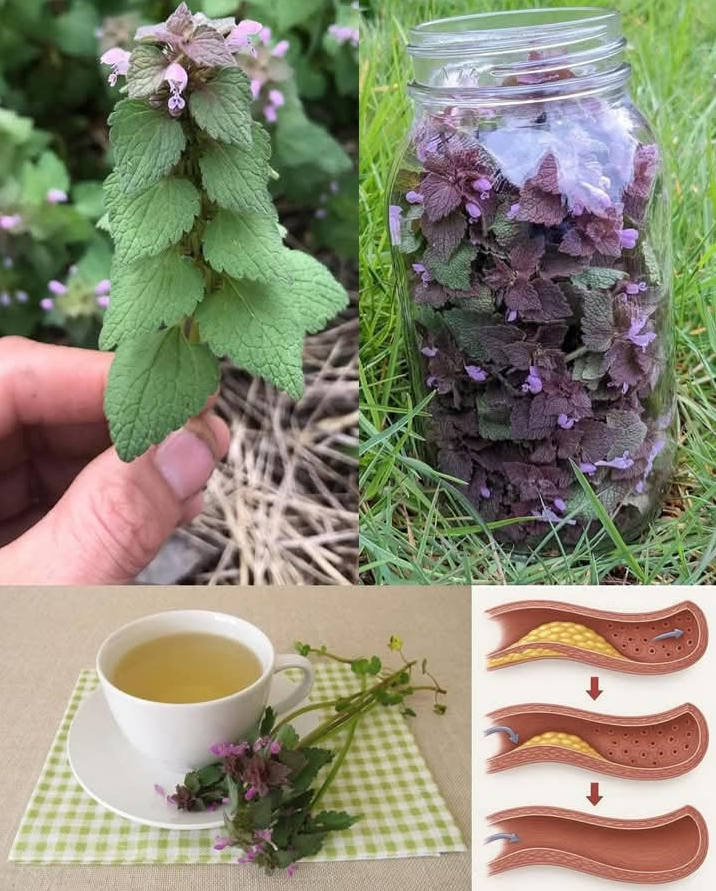-
1 tablespoon fresh or 1 teaspoon dried Purple Dead Nettle leaves (cleaned and pesticide-free)
-
1½ cups filtered water
-
Optional additions:
-
1 teaspoon raw honey or maple syrup
-
A few slices of fresh ginger or a splash of lemon juice
-
Preparation:
-
Harvest and clean:
If foraging, choose healthy-looking Purple Dead Nettle plants from clean, chemical-free areas. Rinse thoroughly and pat dry. -
Boil water:
Bring 1½ cups of filtered water to a gentle boil. -
Steep:
Place the leaves into a heatproof cup or teapot. Pour the hot water over the herb and cover. Let steep for 10–15 minutes. -
Strain and serve:
Strain the leaves out and pour the tea into your cup. Add honey, ginger, or lemon as desired.
Serving and Storage Tips:
-
Serving:
Enjoy warm as a soothing herbal tea, ideally once or twice a day for circulatory support. Best consumed fresh. -
Storage (leaves):
Store fresh Purple Dead Nettle in the refrigerator wrapped in a damp paper towel for up to 3 days. Dried leaves can be stored in an airtight container for up to 6 months in a cool, dark place. -
Storage (prepared tea):
Brewed tea can be stored in the fridge for up to 48 hours. Reheat gently on the stove—avoid microwaving to preserve benefits.
Variants:
-
Smoothie booster:
Add a small handful of raw Purple Dead Nettle leaves to your morning green smoothie for a mild, earthy flavor and nutrient kick. -
Tincture:
You can prepare or purchase a Purple Dead Nettle tincture for more concentrated cardiovascular benefits—just follow dosage directions. -
Salad garnish:
The tender tops of the plant can be added raw to salads or wraps for a nutritious, minty-green flavor.
FAQ:
Q: Is Purple Dead Nettle the same as stinging nettle?
A: No—while both are medicinal, Purple Dead Nettle does not sting and belongs to the mint family. They have different properties and uses.
Q: Can I take it every day?
A: When used in moderation (like in tea or small amounts in food), Purple Dead Nettle is generally safe for daily use. However, consult your doctor if you’re pregnant, nursing, or on blood thinners.
Q: Is it safe to forage?
A: Yes—but always forage from clean, pesticide-free areas away from roadsides or industrial zones, and be confident in identifying the plant correctly.
Q: What are its main health benefits?
A: It supports circulation, reduces inflammation, offers antimicrobial benefits, and provides vitamins like C and iron, which are key for heart and blood health.
Q: Can children consume it?
A: Small amounts in tea or food are generally safe, but always consult a pediatrician for regular use.
